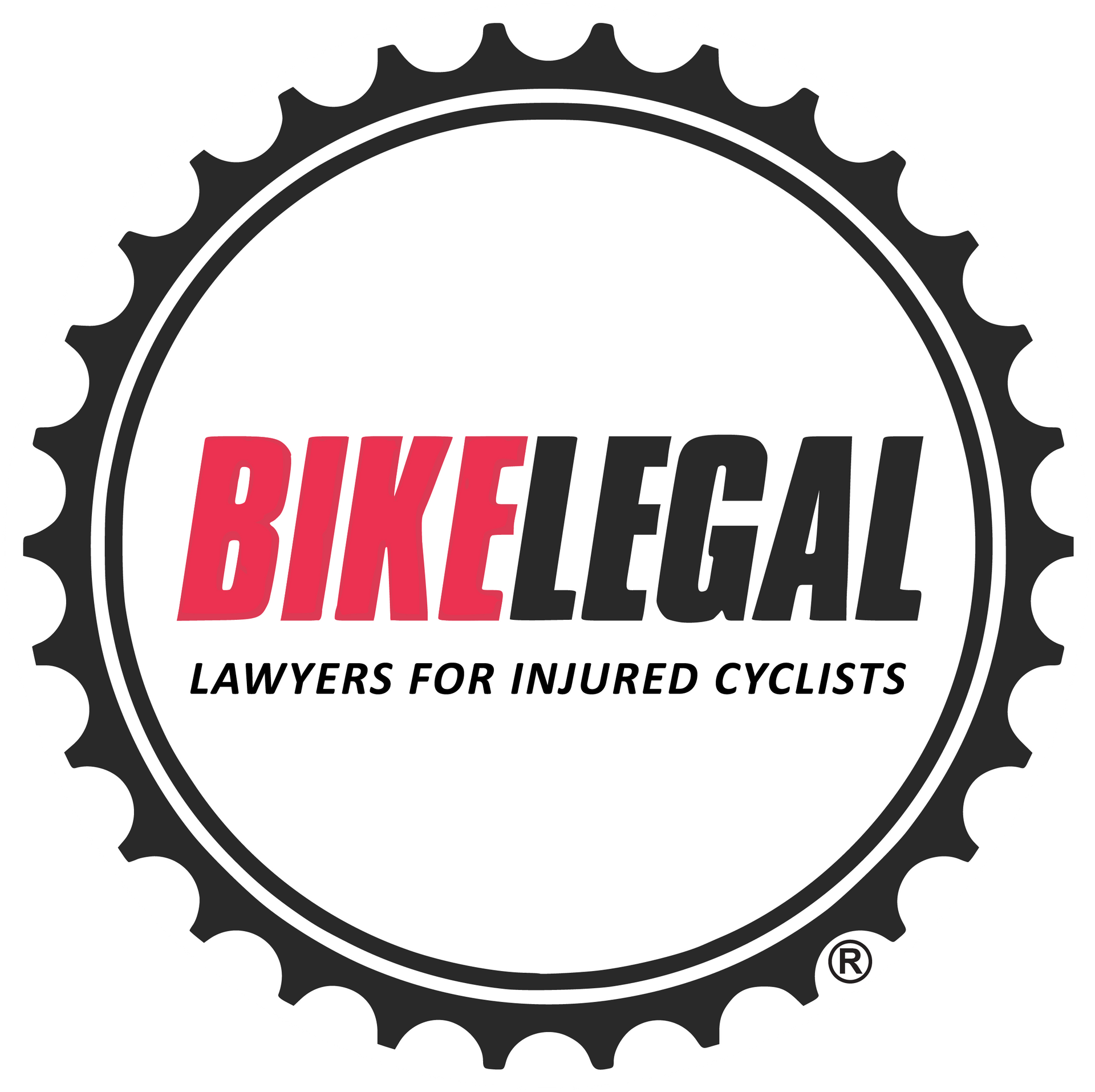Can You Ride a Bicycle On the Highway
Follow us on
social media!
Is It Legal to Ride a Bicycle on the Highway in the U.S.?
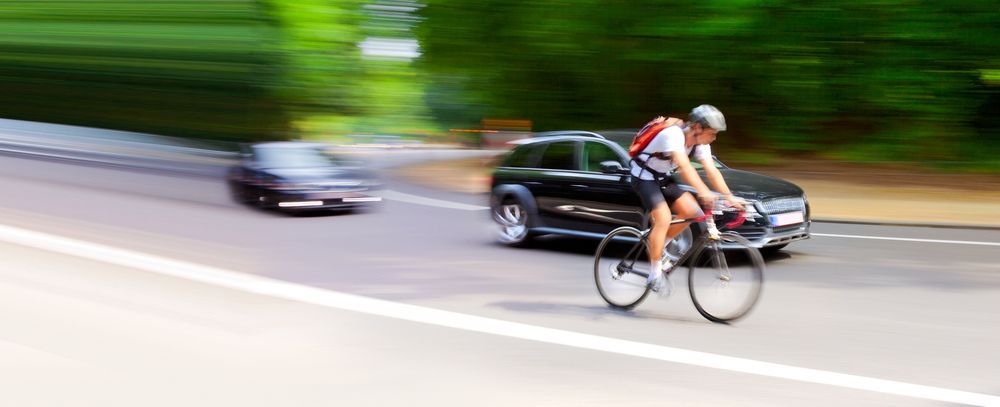
Curious if you're allowed to ride a bicycle on U.S. highways? It's a question that might raise eyebrows and spark discussions among cyclists and motorists alike. With a significant portion of cyclists expressing concerns over safety on public roads, understanding the legal landscape is crucial.
This guide shines a light on the dos and don'ts of highway cycling, offering peace of mind and empowering cyclists to ride confidently.
What we'll explore:
- The legalities of bicycling on highways.
- Safety tips for navigating highways on two wheels.
- Key rules and regulations for cyclists on highways.
- The challenges and how to tackle them for a safer ride.
Can you ride a bicycle on the highway?
In the U.S., the legality of riding a bicycle on highways varies by state and specific highway regulations.
While some states allow bicycles on certain segments of highways, especially where no alternative route exists, others prohibit it entirely, particularly on interstate and controlled-access highways. Local traffic laws and highway signs provide guidance on where cycling is permitted. It's essential for cyclists to familiarize themselves with the regulations in their state and observe any posted signs indicating restrictions to ensure safety and compliance.
What is the Difference between Highways, Freeways, and Interstates?

Although all freeways are highways, not all highways are freeways. In the United States, the terms "highways," "freeways," and "interstates" refer to different types of roads, each with its own characteristics and regulations. Understanding these differences can help clarify the rules and expectations for usage, including for cyclists.
Highways

- A highway is a broad term for any public road or other public way on land. It's used to describe any major public road, regardless of its size, form, or the type of traffic it handles.
- Highways can be rural or urban, and can range from small two-lane roads to large multi-lane roads.
- They often have intersections, traffic lights, and access to properties and local streets. Highways are not necessarily designed for high-speed travel and can be used by all types of vehicles, including bicycles in many cases.
Freeways
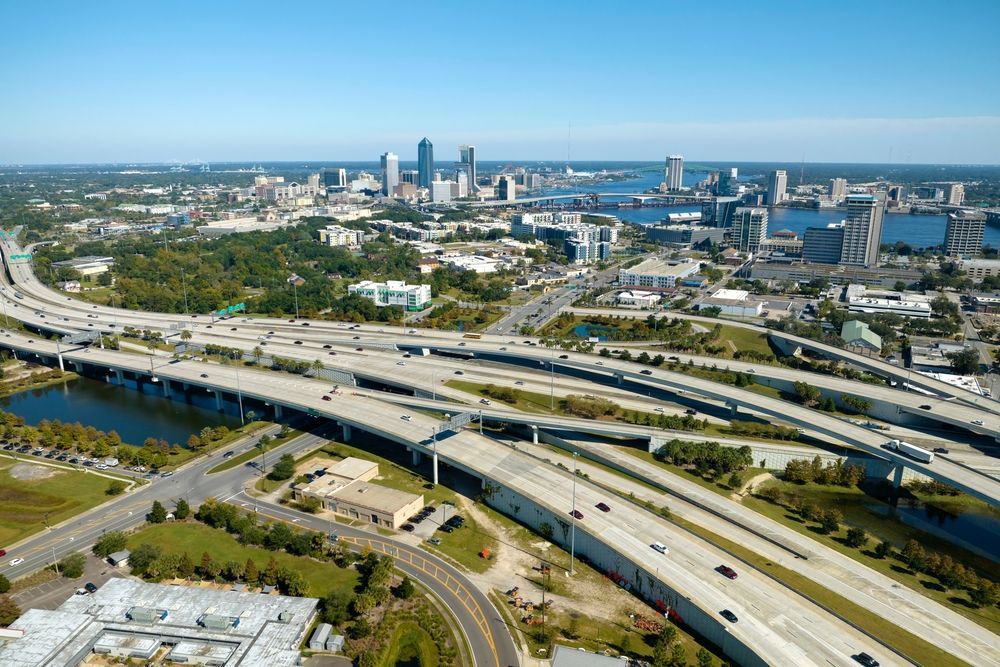
- A freeway is a specific type of highway designed for high-speed vehicular traffic, with fully controlled access, meaning that it is accessible only through ramps and there are no intersections or cross traffic.
- Freeways do not have traffic lights, stop signs, or direct access to properties. They are often multi-lane roads with barriers or medians to separate opposing flows of traffic.
- In the U.S., freeways are generally free to use, meaning there is typically no toll or fee for traveling on them. The term "free" refers to the free flow of traffic, not the absence of tolls (though many freeways are indeed toll-free).
Interstates
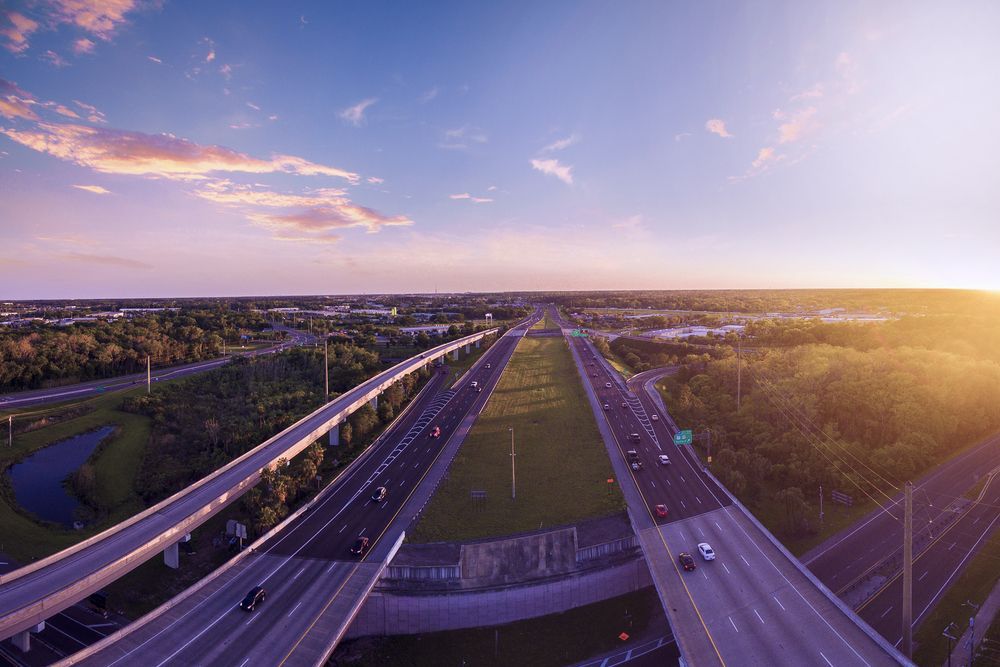
- The Interstate Highway System is a network of controlled-access highways that crisscross the United States. They are a subset of freeways specifically designed for long-distance travel, connecting states and major cities.
- Interstates are usually wide, with multiple lanes in each direction, and are designed to handle high volumes of traffic at high speeds. They have the highest design standards, including wide lanes and shoulders, and are built to promote efficient movement across states.
- Interstates are identified by one- or two-digit numbers, with even-numbered routes running east-west and odd-numbered routes running north-south. They are part of a national system and are regulated by federal laws, although they are maintained by individual states.
Biking on Freeways and Interstates in the United States
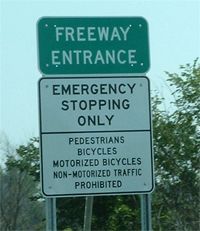
Typically, bicycles are not permitted on freeways and interstates. These high-speed, controlled-access roadways are designed primarily for motorized vehicles traveling at higher speeds, and the presence of bicycles would pose significant safety risks due to the speed difference and lack of protection for cyclists.
There are, however, some exceptions, typically in rural or less populated areas where alternative routes for cyclists are limited or non-existent. In such cases, specific sections of freeways might permit bicycles, but these are relatively rare.
General Rule
- Bicycles are usually banned on freeways and interstates for safety reasons.
- High speeds and the design of these roads make them unsuitable and dangerous for cyclists.
Exceptions
- In some rural or less populated areas, particularly where no practical alternative routes exist, bicycles may be allowed on certain freeway segments.
- These exceptions are more common in states with expansive rural areas and less dense road networks.
Some State-Specific Regulations
- California: Cyclists are generally not allowed to bike on freeways in California. They can only legally ride on the shoulder of about 1,000 miles of California’s freeways, mostly located in Southern California's desert region like I-8, I-10, I-15, and I-40.
- Texas: There are no federal laws prohibiting bicycle use on interstate highways or other freeways. Most western states allow bicycles to use interstate highways or other freeways while restricting bicycle use in urban or congested areas.
- Arizona: Cycling on freeways in Arizona may be prohibited only where there is an alternative route judged equal or better for cycling. Wyoming allows cycling on all freeways, while Oregon allows bicycles except on specific urban freeways in Portland and Medford.
- Washington: In Washington state, cyclists are permitted to ride on the shoulder of limited-access highways unless prohibited. Prohibitions can be temporary or permanent, such as stretches of freeway running through cities.
- In Montana, Nebraska, and Wyoming, bicycles are allowed on all interstates.
Basically, while the general rule across the United States is to prohibit bicycles on freeways and interstates for safety reasons, there are exceptions based on the practicality and availability of alternative routes, particularly in less urbanized states.
Always check local regulations and signage before attempting to ride a bike on any section of a freeway or interstate. For safety and legal reasons, it's generally best to plan bicycle routes on roads that are designated for or more suitable for cycling.
The Legalities of Riding a Bicycle on the Highway
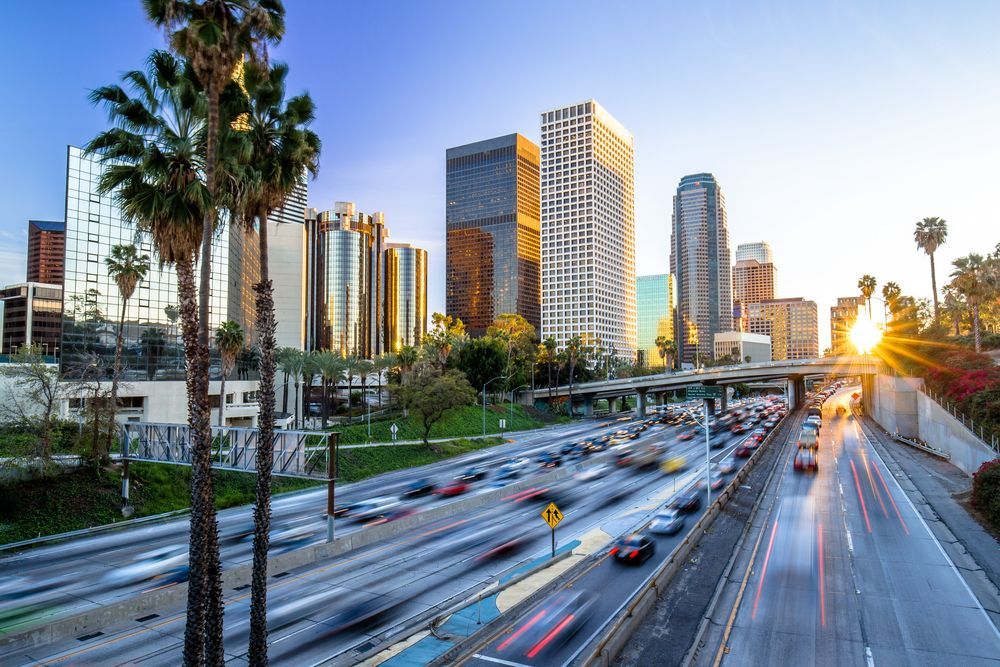
Have you ever found yourself pedaling from point A to point B, only to realize the only direct route is via a freeway? This scenario can put cyclists in a tough spot, facing the dilemma of taking a risky shortcut or opting for a longer, safer, and legal alternative.
While it's generally illegal to ride a bicycle on freeways in the United States, there are moments when the road less traveled—quite literally—seems to be a freeway. So, what's the deal with cycling on Interstate freeways? Let's dive in:
- No Federal Roadblocks: First off, there's no overarching federal law that outright bans your bike from the interstate. But, and it's a big but, the real power lies with the states. They call the shots based on what they deem safe and sensible for their roads.
- State-by-State Scoop:
- Western Wanderlust: Out West? Many states give you the green light to cycle on interstate highways. This is especially true where the alternatives are few and far between, or just downright dangerous.
- City Limits: However, cruise into urban or busy areas, and you'll likely hit a no-go zone for cyclists. It's all about keeping you safe and traffic ticking along.
- Texas Talk: Take Texas, for instance. Fancy a ride on I-10 in the quieter corners of the state? You're in luck.
- But remember, the Texas Department of Transportation (TxDOT) and the Texas Transportation Commission have the muscle to prohibit bicycles on various types of highways. They'll make it clear with official signs if bikes are a no-go.
Before You Head Out on Your Next Ride:
- Check the Local Laws: Your first port of call? Your state's regulations. They're the roadmap to where you can and can't ride.
- Safety First: Visibility is key. Make sure you're seen, and heed all safety advice to keep your highway adventures both legal and safe.
Feeling tangled in the legalities of your next big ride? Bike Legal Firm is here to untangle the knots. Whether you're mapping out a cross-country journey or just curious about your rights on the road, we've got your back.
State-by-State: Can You Ride a Bicycle on the Highway?
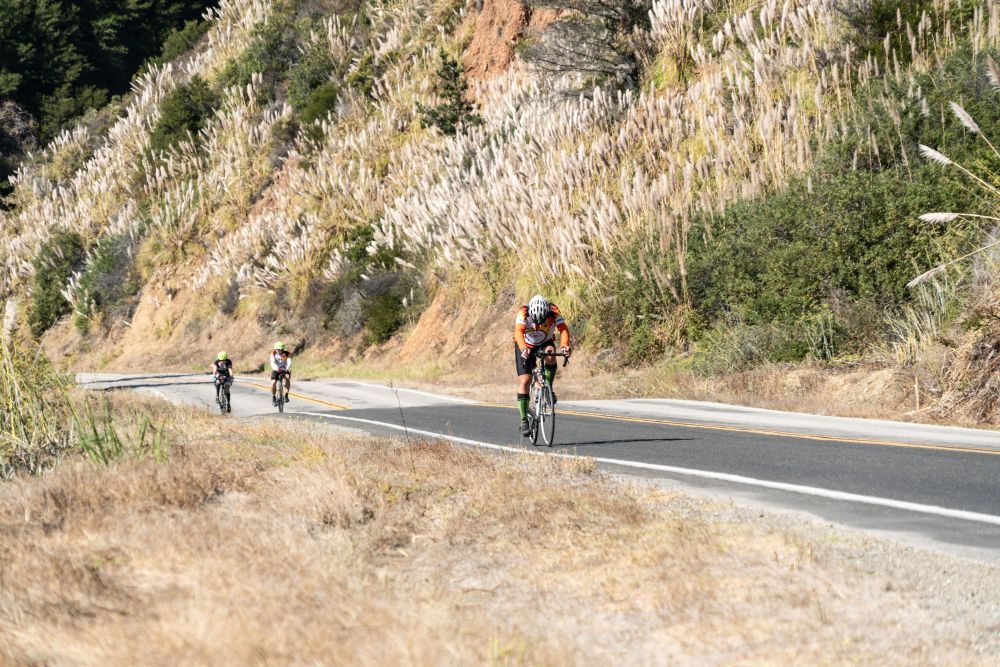
Navigating the rules of the road can be as tricky as a tight corner on a steep descent. When it comes to cycling on interstate highways, the U.S. offers a patchwork of regulations.
Which states prohibit bicyclists from biking on their interstate? Here's a quick rundown of some states with notable rules:
Arizona
- Allowed if No Suitable Alternative: Cyclists can take to the highways in Arizona, but only when there's no better route available. This flexibility ensures that cyclists aren't left without options in less accessible areas.
Wyoming
- Allowed on All Interstates: Wyoming stands out for its open-road policy, allowing cyclists to ride on all freeways. It's a nod to the state's vast landscapes and sparse population.
Oregon
- Allowed Unless Prohibited: Oregon generally permits bicycles on its freeways, except in specific urban areas like Portland and Medford. It's a mix of open roads and city-specific restrictions.
Idaho
- Allowed on All Interstates: Like Wyoming, Idaho welcomes cyclists on all its interstate highways. It's an open invitation to explore the state's scenic routes.
California
- Allowed if No Suitable Alternative: Cyclists in California can ride on certain sections of interstate highways, primarily in areas where there are no viable alternative routes. This is often the case in more rural or less populated regions.
New York
- Generally Prohibited: New York state tends to restrict bicycle access on interstate highways. However, there might be exceptions in specific areas, so it's crucial to check local regulations.
Arizona
- Allowed if No Suitable Alternative: Arizona permits cyclists on interstate highways when there are no better options available. This approach aims to ensure cyclists are not left without access to necessary routes.
Nevada
- Allowed if No Suitable Alternative: Similar to California and Arizona, Nevada allows cyclists on interstate highways in cases where no suitable alternative routes exist. This policy helps accommodate cyclists in less accessible areas.
Utah
- Allowed if No Suitable Alternative: Utah's regulations mirror those of Nevada, Arizona, and California, allowing cyclists on interstate highways when there are no viable alternatives. This ensures cyclists can navigate the state effectively, even in remote areas.
With each pedal stroke, cyclists navigate not just physical terrain but also a mosaic of regulations, ensuring their journey is both legal and safe. The Texas Transportation Commission, like other bodies, sets the stage for where and how we share the road with other vehicles.
Safety Tips for Bike Riding on Highways
The decision to risk a highway stretch requires careful consideration of safety, legality, and personal comfort levels with high-speed traffic. High speeds, vast distances, and close encounters with vehicles demand a heightened level of caution and preparedness. Assuming it is legal to ride a stretch of highway- Here are essential safety tips to keep in mind:
1. Be Visible
- Wear Bright Clothing: Opt for neon or fluorescent colors that stand out during the day on such a roadway.
- Use Reflective Gear: The brighter the clothing, the better motorists can see you.
- Light It Up: Equip your bike with front and rear lights and use them day and night. Flashing lights can be more noticeable, even during the day.
2. Ride Predictably
- Stick to the Shoulder: Whenever possible, ride on the rightmost part of the shoulder to keep a safe distance from traffic.
- Signal Intentions: Use hand signals to indicate turns or lane changes well in advance.
- Avoid Sudden Moves: Keep a straight line and avoid swerving between obstacles that may not be visible to drivers behind you.
3. Stay Alert
- Watch for Debris: Highways can have debris that poses risks. Keep an eye out and safely navigate around obstacles.
- Listen for Traffic: Use your hearing to stay aware of approaching vehicles, especially large trucks that can create wind gusts.
- Avoid Distractions: Keep your focus on the road and avoid using headphones or mobile devices.
4. Plan Your Route
- Know the Law: Confirm that bicycles are allowed on the highway stretch you plan to ride.
- Identify Exits: Plan your entry and exit points. Know where you can safely leave the highway if needed.
- Check Conditions: Before heading out, look up traffic, weather, and road conditions that might affect your ride.
5. Prepare for Emergencies
- Carry a Repair Kit: Have the tools and knowledge to handle common issues like flat tires.
- Bring Water and Snacks: Stay hydrated and energized, especially on long stretches without services.
- Have a Backup Plan: Carry a phone and cash or a card for emergencies. Know who to call if you need help.
6. Understand Wind and Drafting Effects
- Be Aware of Side Winds: Large vehicles can create strong gusts. Position yourself to stay stable if a side wind hits.
7. Consider Using Bicycle or Helmet Mirrors
- Install a Handlebar or Helmet Mirror: Mirrors help you monitor approaching traffic without constantly looking over your shoulder, keeping your focus forward and enhancing safety.
8. Communicate with Drivers
- Make Eye Contact: At intersections or when merging, making eye contact with drivers ensures they've seen you.
- Acknowledge Good Behavior: A simple wave or nod to drivers who give you space or wait for you can promote positive interactions between cyclists and motorists.
9. Educate Yourself on Highway Cycling
- Stay Informed: Laws and road conditions change. Regularly check cycling resources and local news for any updates affecting cyclists.
10. Group Riding Etiquette
- Ride Single File: On highways, it's safer and often required by law to ride single file to minimize obstruction to traffic.
- Communicate Within the Group: Use hand signals and verbal cues to communicate hazards, changes in speed, or direction to fellow riders.
Embarking on a highway stretch of road requires not just courage but preparation and knowledge. Equip yourself with these tips, and you're not just riding; you're advocating for safer cycling for everyone.
Key Rules and Regulations for Cyclists on Highways
Cycling on the highway or interstate highways requires not just physical stamina but also a keen understanding of the rules to ensure safety for all road users. Here are some general rules and regulations that cyclists should follow when navigating highways across the United States:
1. Bicycles as Vehicles
- Equal Rights and Responsibilities: Bicycles are considered vehicles, granting cyclists the same rights and responsibilities as other vehicle operators. This means adhering to common traffic laws regarding stopping, yielding, and right-of-way.
2. Required Equipment for Night Riding
- Visibility Gear: State laws often mandate a white light on the front of the bicycle and and a red light at the rear between sunset and sunrise, or whenever visibility is poor. The brighter the light, the better!
3. Riding Position and Lane Use
- Right Lane Riding: Cyclists should ride in the right lane or shoulder unless making a left turn, avoiding obstacles, or when the right lane is too narrow for a bicycle and a vehicle to share safely.
- Single File vs. Side by Side: Riding single file is recommended in heavy traffic or when there's no passing lane, though some states allow side-by-side riding in certain conditions.
4. Signaling
- Hand Signals: Use standardized hand signals to indicate turns or stops, as bicycles typically lack turn signals and brake lights.
- Left turn: Extend the left arm straight out.
- Right turn: Extend the left arm out with the elbow bent at 90 degrees, hand pointing up.
- Stop: Extend the left arm out with the elbow bent at 90 degrees, hand pointing down.
6. Avoiding Accidents
- Predictability is Key: Be as predictable as possible by avoiding sudden moves, riding in a straight line, and signaling intentions well in advance.
Navigating highways on a bicycle can be complex, but understanding and following these key rules can make your journey safer and more enjoyable.
The Challenges and How to Tackle Them for a Safer Ride
Cycling on highways presents a unique set of challenges. From navigating traffic to dealing with environmental factors, each ride demands preparation and vigilance. Here's how to tackle common challenges for a safer journey:
1. High-Speed Traffic
- Stay Visible: Use reflective gear and lights to ensure you're seen by motorists.
- Maintain a Steady Course: Avoid sudden lane changes or movements that could surprise drivers.
2. Wind and Drafts from Passing Vehicles
- Anticipate Gusts: Be ready to stabilize your bike when large vehicles pass.
- Position Yourself Wisely: Ride at a safe distance from the roadway edge to allow room for maneuvering.
3. Debris and Road Conditions
- Scan Ahead: Keep an eye on the road ahead for obstacles or hazardous conditions.
- Choose Your Path: Safely navigate around debris, and avoid riding through unknown puddles or over metal grates.
4. Limited Exit and Entry Points
- Plan Your Route: Know where you can safely enter and exit the highway. Use maps or GPS to plan ahead.
- Stay Informed: Be aware of upcoming exits and ensure you're in the correct position early to make safe departures.
5. Weather Conditions
- Dress Appropriately: Use layers to adapt to changing temperatures and weatherproof gear to stay dry.
- Adjust Your Riding: Wet or icy conditions require slower speeds and increased braking distance.
6. Fatigue and Hydration
- Take Breaks: Use rest stops to stretch and rest, especially on long rides.
- Stay Hydrated and Fueled: Carry water and snacks to maintain energy levels.
7. Navigating Through Intersections and Exits
- Be Predictable: Use hand signals to indicate your intentions to merge or change lanes well in advance.
- Eye Contact: Make eye contact with drivers to ensure they've seen you before making any moves.
8. Riding in Groups
- Communicate: Use signals and verbal cues to indicate hazards, stops, or changes in direction.
- Formation: Ride in a single file or two-abreast as appropriate, and always be mindful of group size to avoid obstructing traffic.
9. Emergency Situations
- Have a Plan: Know what to do in case of a mechanical failure or if you're involved in a bicycle accident. Carry a basic repair kit and a fully charged phone.
- Know Your Rights: In case of a cycling incident, it's important to know your rights as a cyclist and have the contact information for legal assistance.
Navigate the Highways with Confidence
As we coast to the end of our journey, it's clear that bike riding on an interstate highway, amidst both non-motorized traffic and the roar of faster vehicles, is no small feat. Yet, with the right knowledge and preparation, these roads become less daunting.
Here are your key takeaways:
- Understand your rights and responsibilities on a limited access or controlled access highway.
- Equip yourself with the necessary safety gear and knowledge of official traffic control devices.
- Plan your route, considering such a roadway's challenges, and always prioritize visibility and predictability.
In the vast network of highways, each cyclist's journey is unique, whether it's a leisurely ride on an electric bicycle or a rigorous trek across state lines. Bike Legal Firm stands as your steadfast ally, ensuring that every turn you take on the highway is informed, safe, and within your rights.
Request a free consultation by calling 877-BIKE LEGAL (877 245-3534) or submitting a form.
